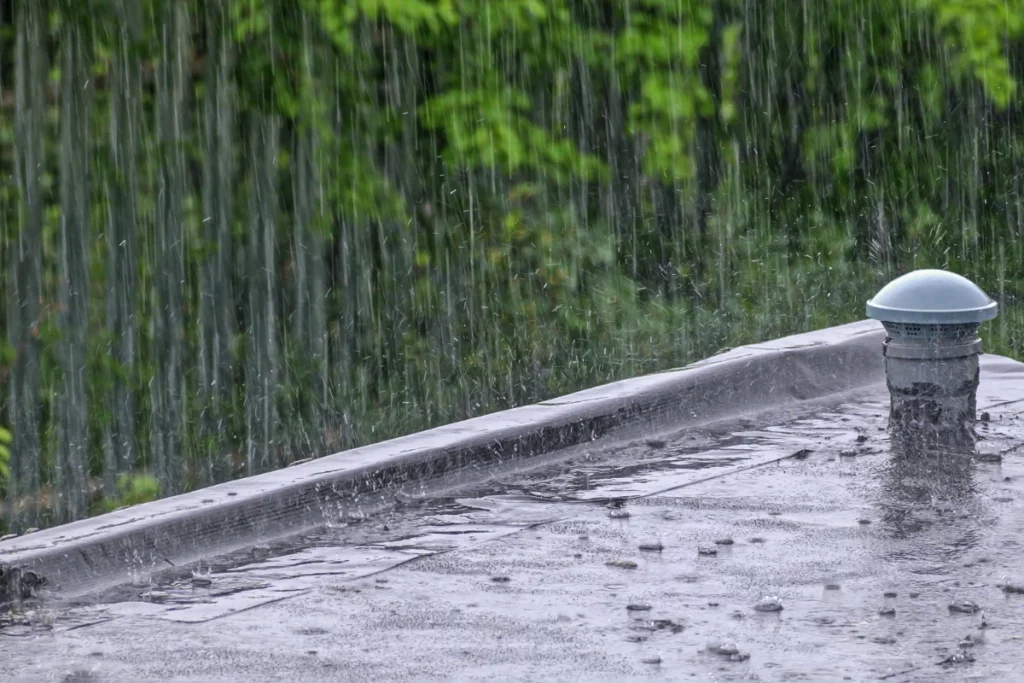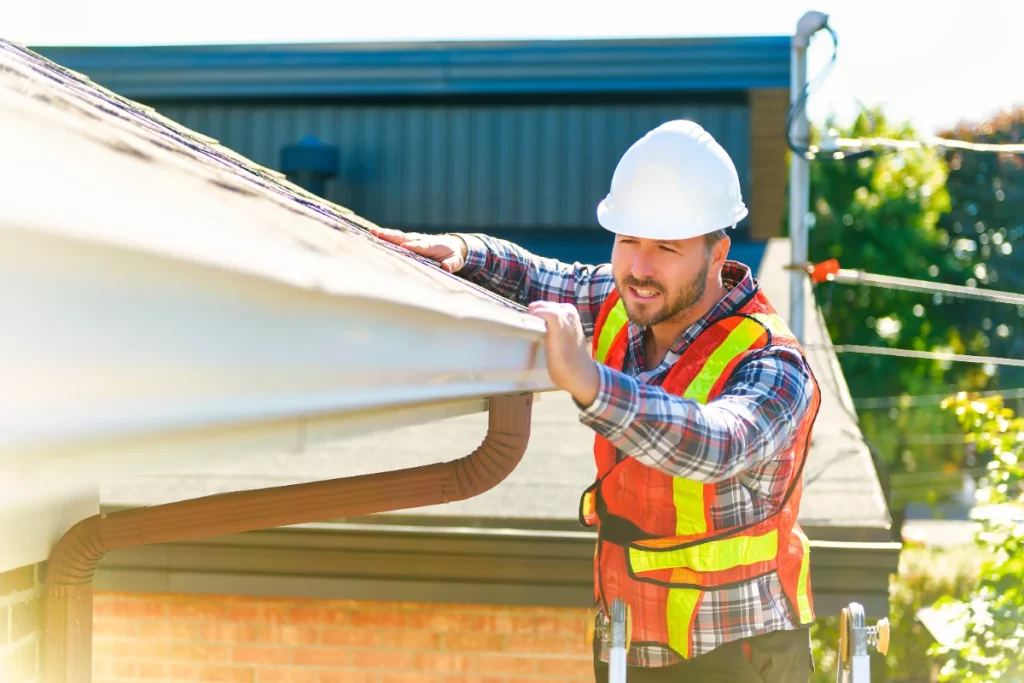Winter is coming, and that means it’s time to start thinking about winterizing your home. Though the southeastern United States doesn’t experience the same kind of winter weather as other parts of the country, winter is nonetheless an ideal time to take care of home maintenance needs that have been neglected during the hot summer months.
One of the most important tasks is winterizing your roof. After all, your winterizing roof is the primary line of defense against the elements.
In Florida and southern Georgia, the most common winter roof problems are wind damage, rain damage, and hail damage. High winds can tear shingles off your roof, and heavy rains can cause leaks. Hail can also damage your roof, especially if you have asphalt shingles.
It’s crucial to prepare your winterizing roof before the onset of winter. This action will aid in preventing damage and maintaining a warm, dry home throughout the winter season.
Southeast Winters and Your Roof
The southeastern United States typically experiences mild winters, characterized by chilly, humid conditions. The occasional cold front, often propelled by powerful gulf winds, can cause a substantial drop in temperatures. While snowfall is rare, it’s not unheard of, particularly in northern areas of the Southeast.
Rain is a common feature of the Southeast’s winter climate. The region often experiences heavy rainfall that can pose a significant threat to roofing structures. Heavy rains can lead to water accumulation, causing potential leaks if your roof has any pre-existing vulnerabilities.

Impact on Your Roof
The impact of these weather conditions on your roof can be significant. High winds, as mentioned earlier, can tear off shingles or even cause more severe structural damage. The heavy rainfall common to southeastern winters can quickly exploit any cracks or gaps in your roofing system, leading to leaks and water damage inside your home.
Moreover, the rare occasions of hail or sleet can also cause damage. These frozen pellets can be quite hard and when driven by wind, can cause significant damage to asphalt shingles. The dents and cracks left by hail are often not visible from the ground, but they can compromise the protective surface of the shingles and make your roof more susceptible to leaks.
Therefore, to protect your home during Southeast winters, it’s critical to ensure your roof is in good condition before the onset of winter weather.
Winter Roof Care in the Southeast
Winterizing your roof when you live in Florida or Georgia allows you to ensure that your home remains safe and protected from the elements. Here are a few winter roof maintenance tips:
Inspect Your Roof
Before winter sets in, it’s essential to inspect your roof for any existing damage. Look out for missing or damaged shingles, cracks, and gaps where water could seep through. These vulnerabilities must be addressed before winter to prevent moisture from entering your home.
If you’re not comfortable climbing onto your roof, consider hiring a professional roofing contractor to perform the inspection for you. They have the necessary skills and equipment to identify any issues and recommend appropriate repairs.
Clean Your Gutters
Clogged gutters can cause water to back up onto your roof, leading to potential leaks and damage. Before winter, make sure to clean out any debris from your gutters and downspouts to ensure proper drainage.
Trim Trees Near Your Roof
Overhanging branches can cause a multitude of problems for your roof, particularly during winter. If left untrimmed, they transform into windborne projectiles, damaging shingles and other roofing materials when high winds blow. In the case of a storm or heavy winds, these branches can break off and fall onto your roof, causing significant structural damage.
Overhanging branches can also lead to an accumulation of leaves and other debris on your roof and in your gutters, impeding proper drainage and increasing the risk of water damage. In humid climates, this debris can retain moisture, fostering the growth of moss or algae that can degrade roofing materials over time.
Additionally, tree branches close to your home can act as a bridge for pests, such as squirrels or rats, who may find their way into your attic. Therefore, keeping trees well-trimmed and away from your roof is a crucial step in preparing your home for winter in the Southeast.
Check for Proper Insulation and Ventilation
Proper insulation and ventilation are crucial for keeping your home warm and dry during winter. To evaluate if your roof has sufficient insulation, you should first venture into your attic. When looking at your attic floor, if you can see the floor joists – the beams that support the attic floor – you likely need more insulation. Ideally, your insulation should be at least level with or even a few inches above the floor joists.
Another way to gauge your roof’s insulation is by considering the temperature of your home during different seasons. If your home is hard to keep warm during winter, or difficult to cool during summer, it may be a sign that your home is under-insulated.
Lastly, consider the age of your home. Older homes often have less insulation than newer ones. If your home was built more than 25 years ago and the insulation has never been replaced, it could be time for an upgrade.
Consider Installing a Protective Coating
If you have an asphalt shingle roof, consider applying a protective coating to provide an extra layer of protection against the elements. This can help prevent damage from hail and high winds. Consult with a roofing professional to determine the best coating for your roof.
Schedule a Professional Roof Inspection
If you’re unsure about the state of your roof or don’t have the time and resources to inspect and prepare it yourself, consider scheduling a professional roof inspection. A licensed roofing contractor can thoroughly examine your roof and identify any potential issues that may need to be addressed before winter.
This will give you peace of mind, acknowledging that your winterizing roof is in good condition and ready for whatever winter weather may come.

Conclusion
Ensuring the adequate winterizing of your roof is vital to safeguard your home throughout the winter months. By following these tips and being proactive in inspecting and maintaining your roof, you can ensure that your roof remains in good condition and keeps your home warm and dry all winter long. Don’t wait until it’s too late – start preparing your roof for winter now! So, take action today and give yourself the peace of mind you deserve. Stay warm, stay dry, and enjoy a cozy winter season!
The Best Roofing Company in Florida
For cold-weather roofing or any other roofing services in Sarasota, Lakeland, or Georgia, contact the experienced roofers at Stronghold Roofing & Solar. We are committed to providing you with the highest quality service, top-notch workmanship, and fair pricing.
FAQ’s – Winterizing Your Roof
Even though we don’t get icy or snowy conditions, it is essential to winterize your roof in the Southeast to protect it from potential damage caused by winter weather conditions.
If you spot any damage or vulnerabilities on your roof, it’s crucial to address them before winter. This could involve repairing or replacing damaged shingles, sealing cracks and gaps, or applying a protective coating. Consult with a professional roofing contractor if you’re unsure how to handle the damage.
Venture into your attic and check if you can see the floor joists. If so, you likely need more insulation. Additionally, consider the age of your home – older homes may have less insulation than newer ones.
While there are steps you can take to prepare your roof for winter on your own, it’s always best to consult with a professional roofing contractor. They have the necessary skills and expertise to identify any issues and recommend appropriate solutions, ensuring that your roof is ready for winter. So consider hiring a professional if you’re not comfortable performing the tasks yourself.
If your roof is old or has significant damage, it may be wise to replace it before winter hits. This will ensure that your home stays warm and dry throughout the season without any unexpected roofing issues arising. Consult with a professional roofer to determine if a full replacement is necessary or if repairs can suffice.










